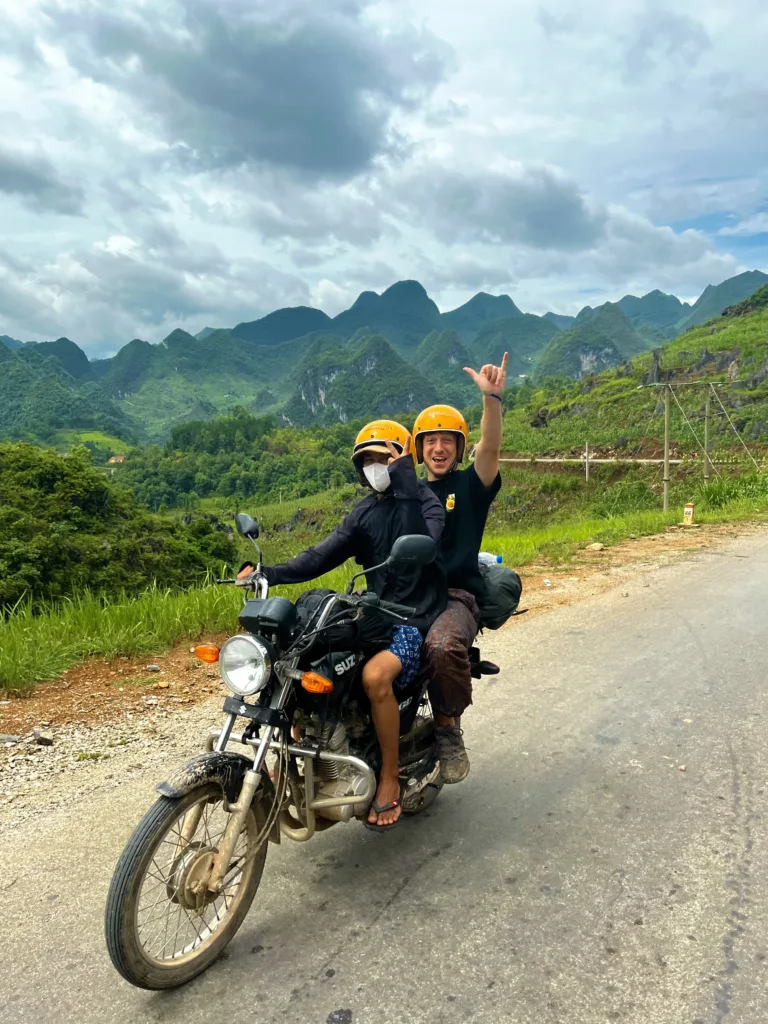The Kingdom of Wonder
Quite a nickname to live up to ^ but once you visit Cambodia and see the grandeur of Angkor Wat, the unmissable Cardamom mountain rainforests and the seemingly photoshopped beauty of the tropical Southern islands you will agree, it truly is a ‘kingdom of wonder’.
Adventure hides in every corner of this country, and while many South-Eastern tourist routes pass through here many parts of this country remain uniquely unexplored. This provides a rare, unfiltered glimpse at the lifestyle, tradition and local wonders travellers all to often set off to find but never truly capture.
However the true wonder here is the people.
The Cambodian people have overcome unspeakable atrocities in the last 40 years and yet their spirit remains the beating heart of this countries beauty today. You will be greeted with smiles of untarnished positivity and receive a charming hospitality if you give the local tours a chance.

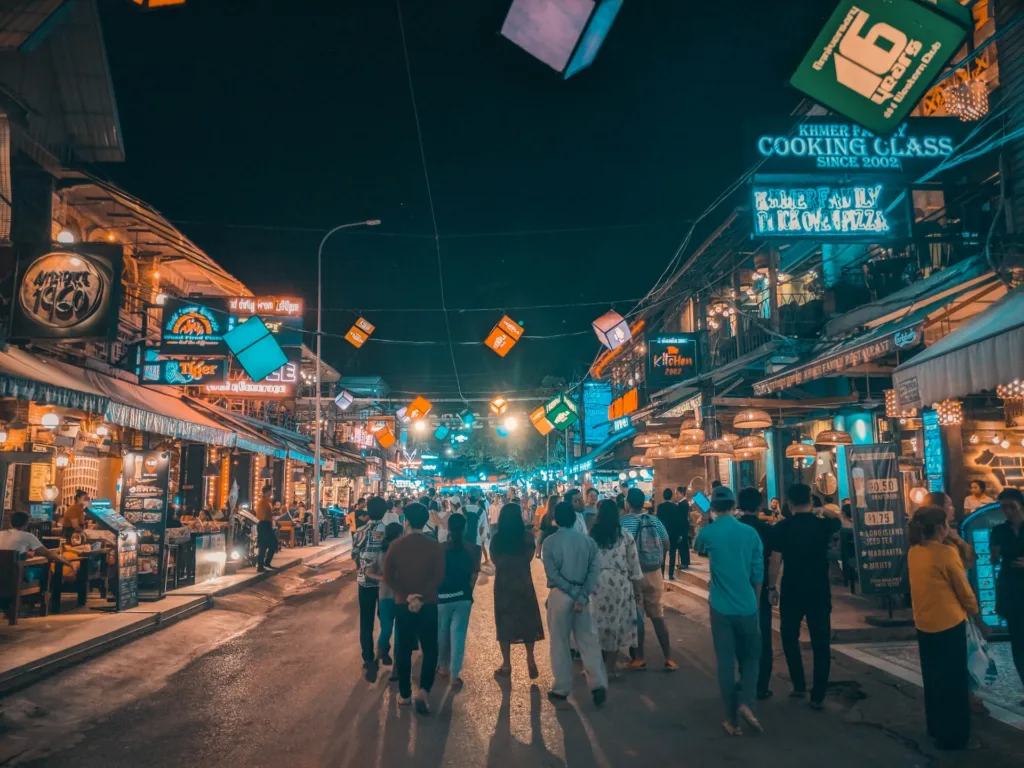
Siem Reap
Siem Reap is an incredible backpackers hub in Cambodia and is the closest city to world famous, Angkor Wat.
Angkor Wat is the largest and arguably most famous religious site in the world. I have visited both in peak time in the day and at sunrise and there is a clear winner. The sunrise Angkor Wat experience is a moving and there is a prolonged stunned silence as the orange hues illuminate the spires offering glimmered reflections across the water.
Siem Reap itself it kitted out for backpackers, from deliciously cheap street food to incredible hostels that can set you up with weeks worth of activities.
You cannot visit Cambodia without coming here.
Koh Rong and Koh Rong Sanloem
The Southern islands of Koh Rong and Koh Long Sanloem are just a short boat ride from Sihanoukville.
Aquamarine waters gently wash upon powdered white sands which lie in a dappled shade of towering coconut and palm trees. This provides the perfect relaxing retreat in the day before a night filled with partying, especially if you are on Koh Rong.
What’s the difference between Koh Rong and Koh Rong Sanloem? While both share, immaculate beaches and lush jungle Koh Rong is more of a party island and Koh Rong Sanloem has a more chilled out and romantic vibe.
Cant choose? Both are stunning and well worth a trip, plus there’s only a 20 minute boat ride between them so we recommend sampling both!
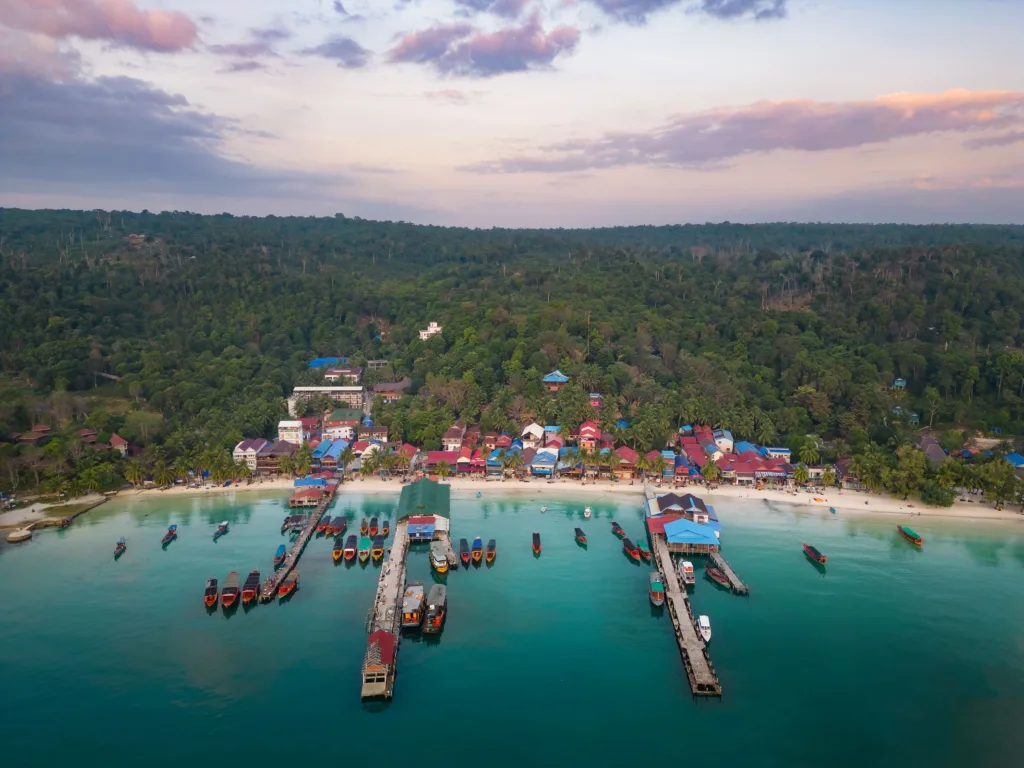

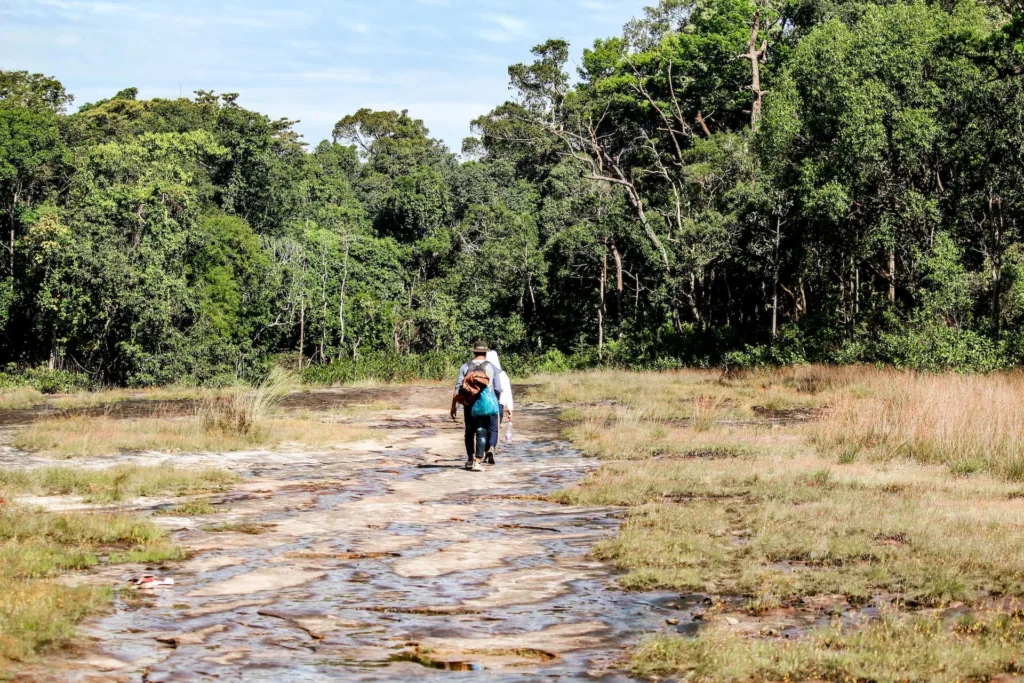
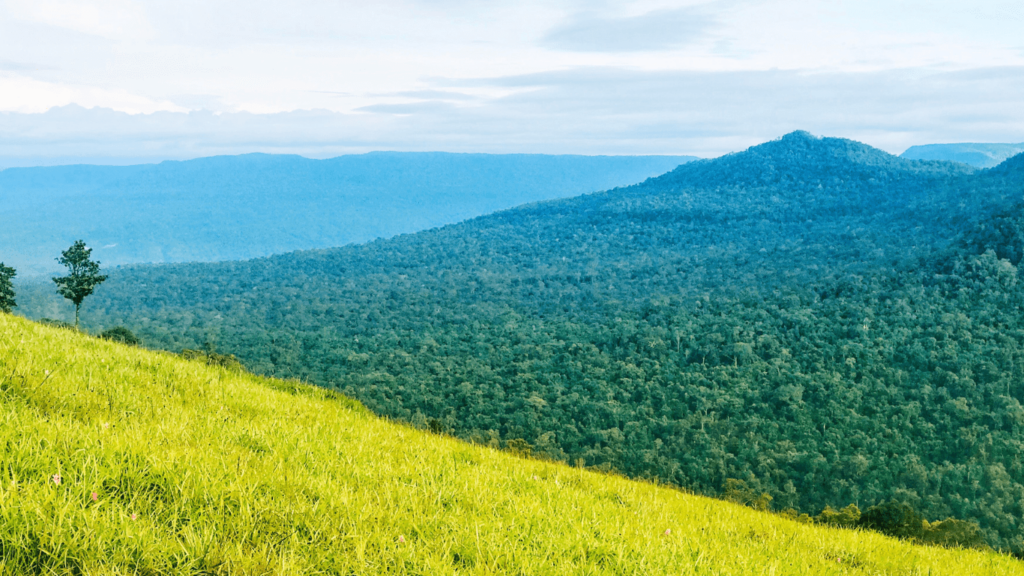
Cardamom (Krâvanh) Mountains
190 miles long and 43 miles wide stretches the surrounding rainforests of the Cardamom Mountains.
This untouched jungle paradise is reserved for the most adventurous travellers seeking a taste of some of the last strongholds of endangered wildlife, forestry and authentic jungle village lifestyle in all of South East Asia.
Within the thick jungle you can find an array of endangered wildlife, Asian elephants, gibbons, clouded leopards, Indian civets, banteng, Malayan sun bears dholes, gaur, and Sunda pangolins.
Tucked away in these forests you’ll find highlights like Stung Areng Valley, the captivating Khnong Phsar grasslands, and the exceptional ecolodges of Botum Sakor National Park. Don’t miss the enchanting Tatai Wildlife Sanctuary with its breathtaking waterfall and thrilling eco-adventures or visit Chi Phat for an authentic, eco-friendly gateway into discovering the Cardamoms.
Phnom Penh
This city is a crazy, hive of energy.
You walk the city streets with a soundtrack of sizzling woks, beeping and bartering and become surrounded by a confusingly delicious aromas of seafood, meats and exhaust fumes.
In this chaos you will find some real gems, like the central market, Royal Palace, and silver Pagoda. Like many capitals in South-East Asia the overwhelming streets are swarming with life so embrace the butterflies and wander aimlessly through this once in a lifetime cultural experience.
It is also important to take time to pay your respects and learn about the Khmer Rouge regime at the heart wrenching Killing Fields of Phnom Penh.
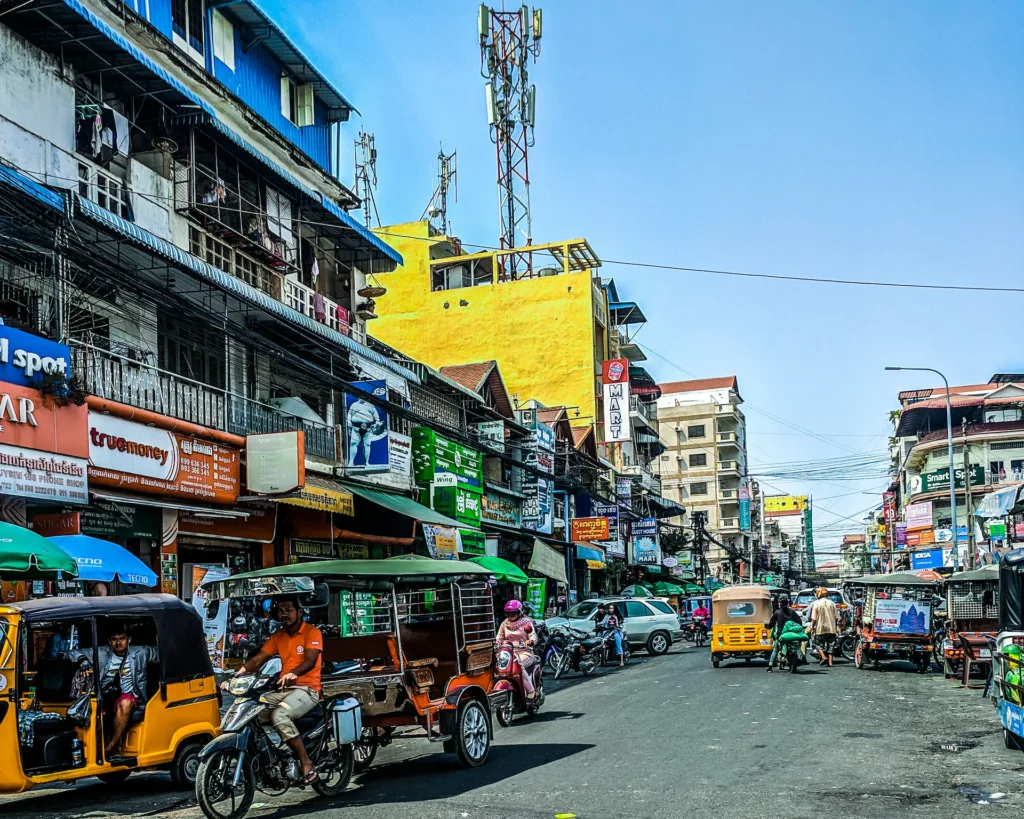
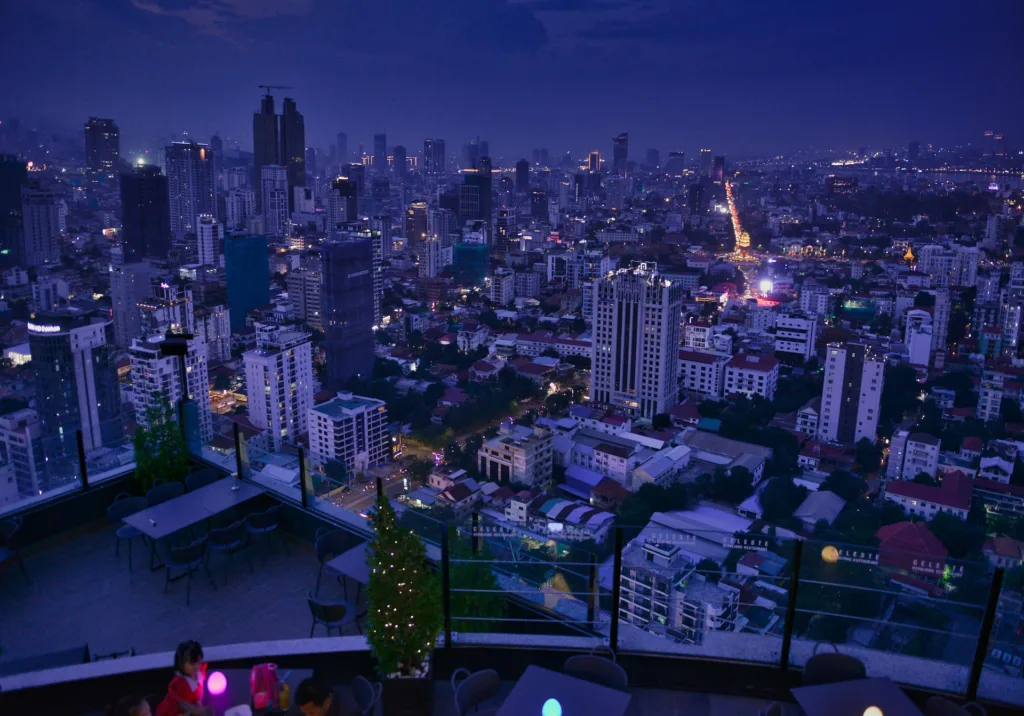
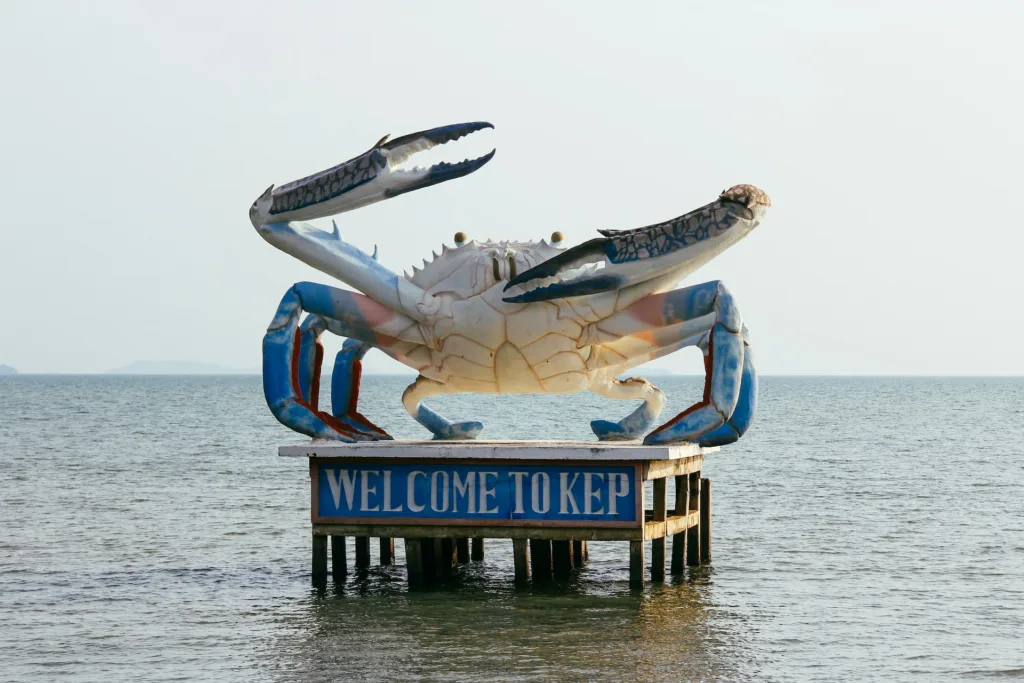
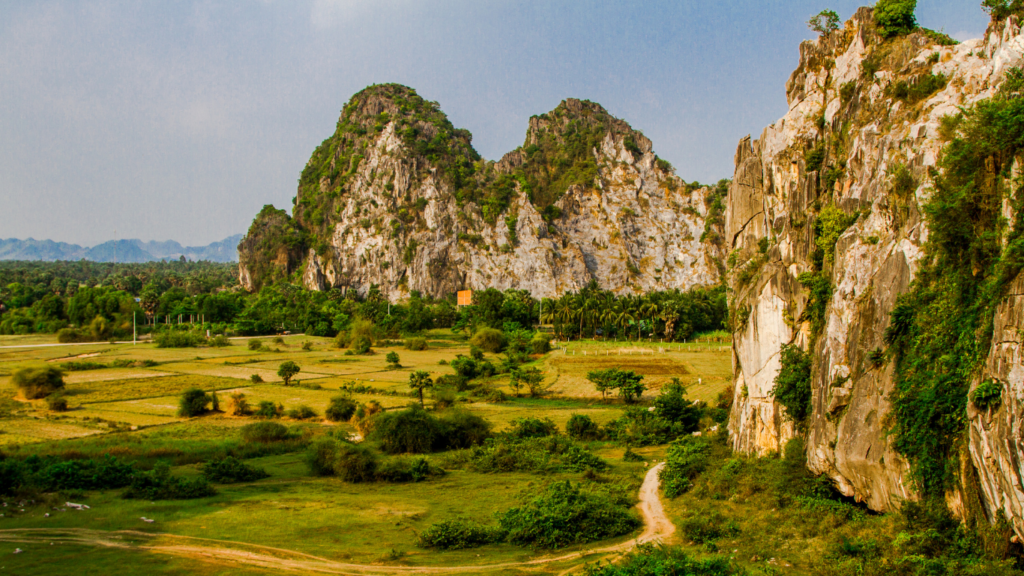
Kep
Just 30 minutes from neighbouring Kampot, Kep is a beautiful coastal town, known for fresh seafood, boutique villas and the rustic beaches of Rabbit Island.
2 places you can’t miss is the national park which offers butterfly covered treks and The Kep crab markets – a world-renowned spot for tasting the freshest peppery crab dishes right by the waterfront.
Kampot
Kampot the legendary land of salt and pepper production.
If table seasoning isnt enough to convince you to stop off here then how about the stunning sights of Bokor national park, Phnom Chngok cave temple, Popokvil Waterfall and Wat Sampov Pram temple.
Kampot offers some of the very best of Cambodia cooking and is well worth stopping here just to try some of the dishes that are unique to this town.
Or for the thrill seekers why not visit Arcadia Waterpark to be sent miles high into the sky by inflatables!
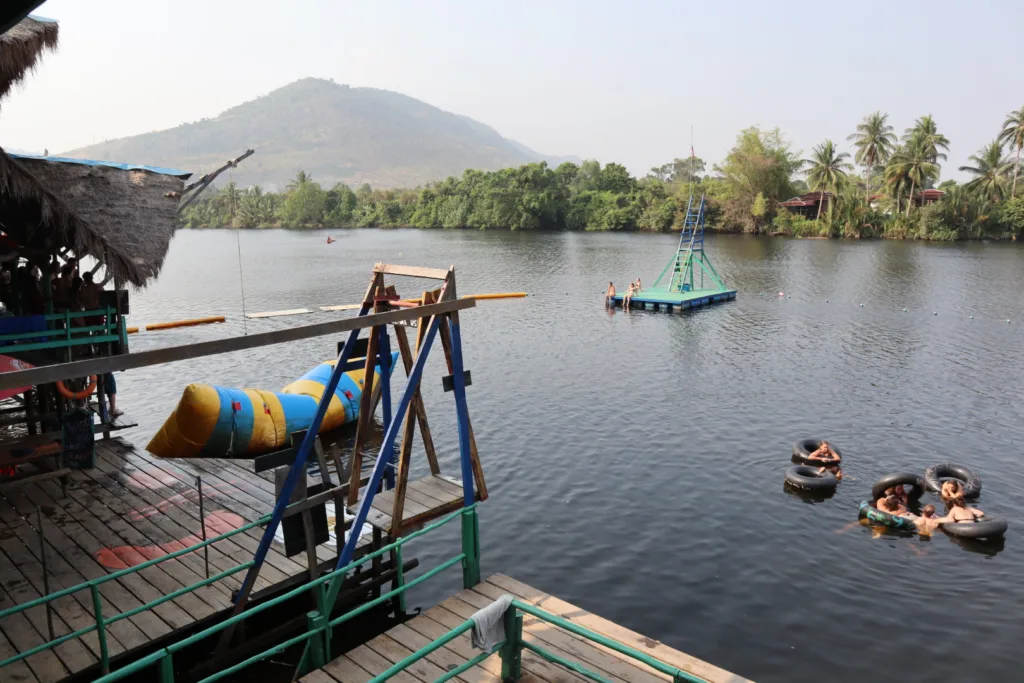

Tours
To capture a cultures true harm and unlock a countries hidden secrets you often need a trusted local guide. Sometimes you may be yards away from a hidden jungle temple, the best local street food or unforgettable cultural experiences but the untrained traveller will walk straight passed chasing the crowds.
Take Angkor Wat for example, there are 72 temples dotted around the main temple yet most solo travellers miss out without knowing any better. Instead find a guided tour like this
Or sometimes all you need is a push to taste flavours out your comfort zone why not try a local Cambodian Street food tour.
Culture
The untarnished positivity of the Cambodian people is inspiring.
Just over 40 years ago Cambodia experienced a mass genocide at the hands of the Khmer Rouge – 3 million died, all architecture destroyed, and all belief, creativity and hope locked away.
Today it is hard to pair the warm welcome of smiling faces, fond waves and children’s laughter to this atrocity but it really does show the strength and resilience of the Cambodian spirit.
A visit to the haunting Phnom Penh killing fields is vital to understand the painful reality of Cambodian Culture.
Activities
So what are the best things to do after visiting Angkor Wat? There are countless Cambodian activities besides the temples of Angkor that will fill your days with adventure – sample the street food, explore the Battambang bat caves at dusk or take a ride on the towns bamboo train. Why not experience the island life and visit Cambodia’s tropical southern islands or trek into the Cardamom Mountains or across the rolling hills and Rice Fields of Kep and Kampot. Or for something out of the ordinary visit the spectacular non-profit Phare Cambodian Circus which raises money to restore the dramatic arts of Cambodia after the Khmer Rouge Regeme .
Cuisine
Cambodian Cuisine is a delicious infusion of Chinese, Thai, Vietnamese and even French influence. You will find contrasting flavours like fermented sauces, punchy black Kampot pepper and aromatic spices such as, jungle Cardamom, Star Anise, Tamarind, Ginger, Kaffir Lime and of course lemongrass. You must try famous Cambodian dishes like Amok, Kdam Chaa, or Bai Sach Chrouk for a traditional forkful of deliciousness.
Accommodation
From the Bamboo beachside bungalows of Koh Krong to the luxury resorts of Koh Russey and the backpacker hostels of Siem Reap, Cambodia caters for everyones needs. With hostels coming in as cheap as £4 and a east of luxury villas and hotels for as little as £50, Cambodia has some of the cheapest accommodation in all of South East Asia.
Nature
The Cambodian landscape is defined by the mighty Mekong river that runs for almost 300 miles and the Tonle Sap lake and river. These waterways are the life force of the local community providing fishing, trade routes for business and flooding irrigation for farming. The warm, humid climate nurtures rolling rice fields and jungle rainforests that provide a sanctuary for some of the most endangered animals on our planet. The oceans are home to a vibrant array of marine life and provide the local coastal towns and islands a plentiful supply of delicious fresh fish and shell fish. The most famous of all being the supply of gigantic crab!
Visas and Entry Requirements
In 2023 you can gain a 30-day tourist visa to Cambodia online or upon arrival.
Both the Cambodia eVisa and Visa On Arrival (VOA) cost £30.
The online eVisa takes 3 business days to process.
Local Laws and Customs
Respect for Monarchy: Cambodians hold their monarchy in high regard, so it’s cool to show respect when the topic comes up.
Dress Code for Temples: When visiting temples, cover your shoulders and knees as a sign of respect. It’s a big deal here.
Public Behavior: Keep public displays of affection to a minimum – it’s more respectful in Cambodian culture.
Drug Laws: It’s strict here. Don’t even think about it. Drug-related offenses can lead to serious trouble.
Local Customs: Greetings with a slight bow and a smile are appreciated. And if offered food or drinks, graciously accept – it’s their way of showing hospitality
Safety
Cambodia is a relatively safe destination with petty crime making up most of the criminal activity in the country. Like most of South East Asia tourists need to watch out for people snatching bags, phones and cameras off tables, with thieves commonly grabbing them as they speed passed on their moped.
Walking down both the busy streets of Phnom Penh and the rural lanes of Kampot I felt pretty safe. After travelling Cambodia for months I realised that the only real negative interaction was some hard hassling from the local street vendours and a few very avoidable scams.
A couple Cambodian Scams to watch out for are:
Fraudulent E-Visa websites – there are so many but only a fee are legit.
Police Corruption – You may be asked to pay a fine/tax to police although this is completely injust, be polite and pay the fine, arguments lead to escalation.
Angkor Wat – This is a hub for scammers, if you choose a tour guide agree the price before hand.
Motorbike Scams – As always take picture of all damage including any hidden underneath tape. I have had countless bike shops claim damage and without these photos its your word against theirs.
Vaccinations
Our pharmacy travel consultant recommended :
Diphtheria, Poliomyelitis, Tetanus, Hepatitis A, Rabies, Typhoid, Cholera, Hepatitis B, Japanese Encephalitis and Yellow Fever.
RESPECT
Respecting Buddhism in Cambodia : 93% of the Cambodian population are Buddhist and most men are expected to enter Monkhood during their lifetime.
You will likely see the vibrant orange Kāṣāya of Buddhist Monks as they peacefully make their way to meditate or receive food offerings in the markets called ‘almsgiving’. It is important to not disturb these monks, especially if you are a female traveller. Monks are prohibited from touching or being in close contact with women including their female family members.
If a Monk does naturally cross your path, the traditional Cambodian ‘Som Pas’ is a respectful way to greet a monk – this is where you place your hands together in a prayer like manner and offer a subtle bow.
Gestures to avoid in Cambodia:
Dont touch peoples heads in Cambodia. Although ruffling the hair of friends and family is endearing in the western world, in Buddhism the head is sacred and touching it is considered highly offensive.
Dont eat with your left hand as it is usually reserved for toilet hygiene and unclean tasks.
Packing list
- Filtered Water Bottle
- Universal Adaptor
- Reef-Safe Sunscreen
- Activated Charcoal (Tummy Bugs)
- Travel Wallet
- Waterproof (Wet Season)
- Mosquito Net
- VPN for Cambodia’s Internet’s Censorship
- Lip Sun Cream
- Dioralyte after sickness
- Toothbrush Travel Cover
- Travel Locks
- Mosquito Repellent
- Power Bank
- Dry Bags
- Waterproof Phone Case
- Packing Cubes (Suitcases)
- Multivitamins for sickness
- Caps and Hats
- Sunglasses
1
When is wet season?
Wet Season is from May to October.
2
What is tipping culture in Cambodia?
Tipping is not a custom in Cambodia, most hotels, street vendors, and tour guides will not expect a tip.
3
Why is there a dinosaur carving at the temples of Angkor?
A popular conspiracy and unanswered mystery circulates around the carving of a Stegosaurus on the temple of Ta Prohm at Angkor. This stone caring has raised the debate into wether dinosaurs survived in the depths of the Cambodian jungle until the Human Era and were remembered and successfully documented by the ancient Khmer civilisation.
4
Emergency Numbers in Cambodia?
119 for emergencies (023-723840 in English), 118 for fire incidents and 117 for police assistance (097-7780002 in English)
5
Are the insects in Cambodian street food safe to eat?
Yes the insects in Cambodia are actually surprisingly tasty and completely safe to eat. Enjoy the likes of Crickets, Tarantulas, Locusts and Grasshoppers deep fried with a touch of salt.
6
Are there Tigers in Cambodia?
Unfortunately Tigers have been extinct in Cambodia since 2010. However, more recently the Cambodian government is discussing whether to reintroduce Tigers into the wilds of the Cardamom Mountain Rainforests. So there may be hope on the horizon for these beautiful big cats.
7
Why are Geckos lucky in Cambodia
Many Cambodians believe that counting the chirps of Gecko’s can predict the fortune of whether you are likely to get married
8
Is there an ethical elephant sanctuary in Cambodia?
While we advise against most so called ‘ethical’ elephant experiences in South East Asia the Elephant Sanctuary in Cambodia is an exception. Dedicated to the safeguarding of Asian elephants this sanctuary provides a rare glimpse into the delicate balance of ethical eco-tourism and the conservation of endangered wildlife.
9
How much are crabs in Kep Crab Market?
Depending on your haggling skills crabs cost $5-10 dollars in Kep’s Crab Market, Cambodia.
10
Why can I use dollars in Cambodia?
Many Cambodian street vendors and shops accept dollars as payment. This is because dollars are the unofficial second currency of Cambodia and is often used with tourists.

